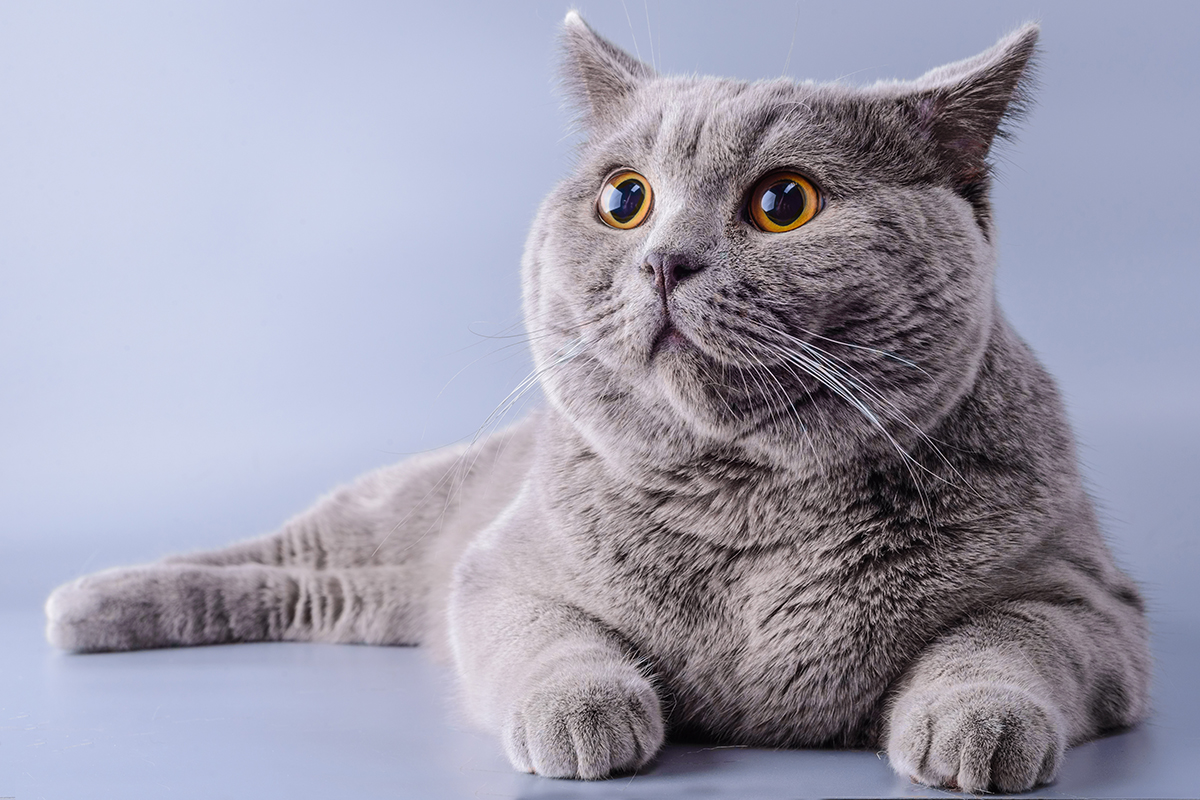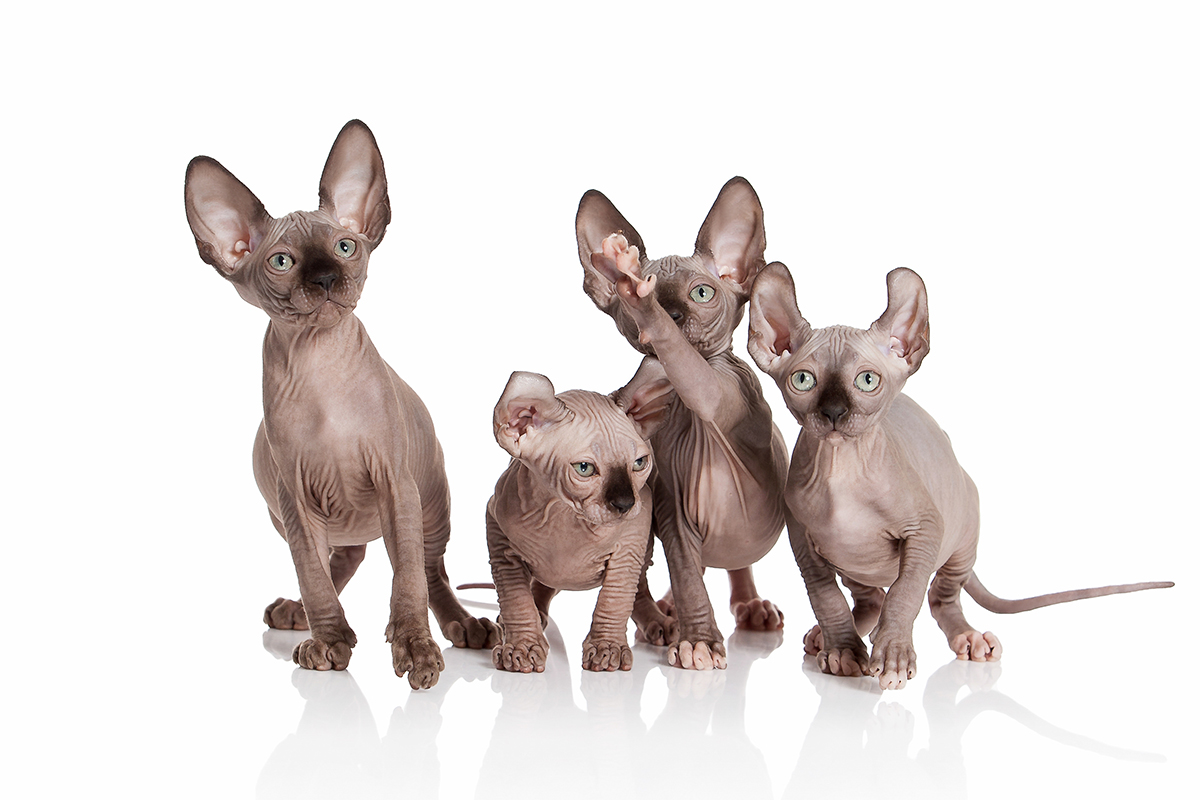
Why dog breeds look so very different, but cats don't
Why don't pedigreed cats show the extremes in body size and shape that dog breeds do?
From the Abyssinian to the Turkish van, cat lineages have been bred for decades to produce felines with minor physical distinctions. These include rounder or leaner faces, shortened snouts, ears that fold inward, and coats in a variety of colors, textures and lengths.
But the nuances among cat breeds pale in comparison to the staggering physical differences among pedigreed dogs. Corgis and dachshunds are short-legged and stumpy, with elongated, stocky bodies, while greyhounds and whippets are tall, lean and leggy. Mastiffs are short-haired bruisers that can weigh over 100 lbs. (45 kilograms) and have massive, powerful chests and jaws. Meanwhile, dainty Malteses and shih-tzus have long, flowing hair and can be carried in a handbag.
Why don't pedigreed cats show the same extremes in body size and shape as dog breeds do?
Photos: Champion cats are show-stopping stunners
Currently, there are 42 recognized cat breeds in the U.S., according to the Cat Fanciers' Association (CFA). As for dogs, the American Kennel Club (AKC) recognizes 190 breeds, though the international organization Fédération Cynologique Internationale (FCI), also known as the World Canine Organization, acknowledges 340 dog breeds.
In domesticated species, breeds represent lineages that were carefully monitored and manipulated over time through selective breeding to consistently produce animals with certain traits, Leslie Lyons, a professor with the College of Veterinary Medicine at the University of Missouri, told Live Science.
New mutants
Unexpected variations in the looks of an animal that's been bred — unusual size, lack of a tail, curly hair or peculiar markings, for example — are the result of genetic mutations, which appear naturally "all the time," and are then perpetuated through generations by people who find the new trait appealing, according to Lyons.
Sign up for the Live Science daily newsletter now
Get the world’s most fascinating discoveries delivered straight to your inbox.
"Even though the basic body plan says one thing, mutations occur, and humans select for the ones they prefer," she explained.

Most of the selection that produced the cat breeds recognized today took place over the last 75 years, Lyons said. Dog breeds, on the other hand, have been taking shape for several hundred years, according to Elaine Ostrander, chief investigator in the Cancer Genetics and Comparative Genomics Branch of the National Human Genome Research Institute, at the National Institutes of Health.
Companions and co-workers
Both cats and dogs lived side by side with people long before distinct breeds emerged. Skeletal evidence from western Russia suggests that dog domestication dates to at least 19,000 years ago, while cats were domesticated more recently — about 10,000 years ago, based on remains excavated in the Near East.
But as the human-canine partnership developed, people quickly realized that dogs could perform highly specialized tasks. Through selective breeding, people living in different environments began shaping dogs that could help humans survive, Ostrander told Live Science.
For example, herding goats in mountainous regions called for different traits in a dog than herding sheep in pastoral lands, Ostrander explained. Some people bred dogs to guard property, help with heavy lifting on a farm or hunt certain types of animals, such as large and powerful deer, small and speedy rats, or badgers, which hide in warrens underground, she said.
"Our data shows that very deliberate crossbreeding and selection for particular traits played the biggest role in the amazing diversity we see running around the dog park today," Ostrander said.
By comparison, cats typically held one of two roles in human households: companions or pest controllers. Cats performed these fairly straightforward tasks perfectly well in their default shape and size, so their owners weren't inclined to dramatically refashion the cats' bodies, Ostrander told Live Science.
Related: Here, kitty, kitty: 10 facts for cat lovers
Piggyback mutations
However, there can also be drawbacks to selective breeding, she warned.
"Strong selection often results in reducing overall diversity of a population. If you're selecting really hard for particular attributes, you're going to breed like animals to like animals [animals that resemble them], and in the process, you will lose some diversity," Ostrander said.

In some cases, the mutations associated with breed-defining traits come with an associated genetic cost — so-called "piggyback mutations," Lyons added. A cat with two copies of the Scottish fold mutation — which gives cats ears that tip forward and hug their heads — has a higher chance of developing a severe arthritic condition called osteochondrodysplasia. And Persian cats, bred for their squashed faces and long, fluffy coats, are also genetically predisposed to develop polycystic kidney disease, according to Lyons.
In dogs, a genetic variant that produces dark coats in standard poodles also predisposes them for squamous cell carcinoma — a type of skin cancer, Ostrander explained.
"Nobody's trying to breed poodles who get squamous cell carcinoma," she told Live Science. "But the variants are really close to each other in genome, so if you select for one, the other will truck along with it."
Both the AKC and CFA are tracking scientists' findings about the genetics of cat and dog breeds, "and are trying their best to not allow bad things to happen with the good things they want as well," Lyons said.
"But sometimes, the trait that you're selecting for in the first place may not be a good idea," she added.
Certain exaggerated physical traits can introduce health problems, particularly in dog breeds, Ostrander said. The wrinkly faced shar-pei's signature skin folds can harbor bacteria that lead to infections, while breeds of dogs and cats with dramatically shortened skulls can suffer from breathing issues, Ostrander explained.
However, a growing number of breeders in recent decades have been working to reign in some of the most extreme variations of these traits and are investigating breeding strategies that incorporate growing reservoirs of genetic data to produce healthier animals, according to Ostrander.
"It was not an easy sell to breeders 20 years ago — to say, 'You have to change the breed standard,'" Ostrander told Live Science.
"But they get it now. The trick here is not to throw out of breeding programs every [animal that is a] carrier of a recessive disease, but don't breed carriers to carriers. It'll take a little longer to dilute it out of the population, but you'll be able to do it — and they get that," Ostrander said.
Original article on Live Science.
Editor's Note: This article has been updated to correct the number of dog breeds recognized by the American Kennel Club, which is 190, not 167.

Mindy Weisberger is an editor at Scholastic and a former Live Science channel editor and senior writer. She has reported on general science, covering climate change, paleontology, biology and space. Mindy studied film at Columbia University; prior to Live Science she produced, wrote and directed media for the American Museum of Natural History in New York City. Her videos about dinosaurs, astrophysics, biodiversity and evolution appear in museums and science centers worldwide, earning awards such as the CINE Golden Eagle and the Communicator Award of Excellence. Her writing has also appeared in Scientific American, The Washington Post and How It Works Magazine. Her book "Rise of the Zombie Bugs: The Surprising Science of Parasitic Mind Control" will be published in spring 2025 by Johns Hopkins University Press.









